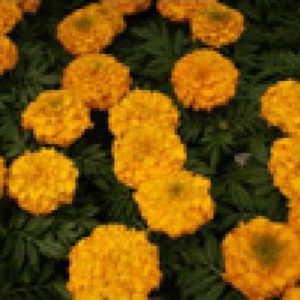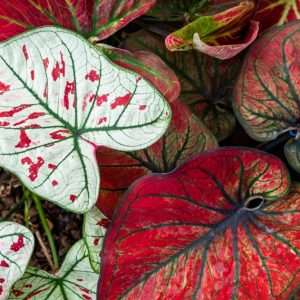Description
Dahlia –
There are about 30 species and some 20,000 cultivars of bushy, often tuberous-rooted, perennials, sometimes grown as annuals, in this genus. They occur from mountainous areas of Central America. They are grown for their flower heads which are available in a variety of forms, colors, and patterns. Leaves are pinnate, sometimes pinnatifid to pinnatisect, and divided into oval leaflets, with toothed edges and rounded tips, 8-20″ long, proportionate in size to the blooms, and are mid to dark green. Cactus and Laciniated blooms often have more delicate, finely cut leaves. Almost all currently grown cultivars have strong, straight stems and attractive foliage. Dahlias flower from mid summer to first frost, when many other plants are past their best. All are good for garden display and cutting, many, especially the giant flowered dahlias, are suitable for exhibition. Plant different types in a bed, or group them in threes or fives in a mixed herbaceous border. Those for exhibition or cut flowers are best grown in rows on their own. Bedding dahlias are low growing and may be raised from seed and treated as annuals. They bloom from early or mid summer or autumn, especially if deadheaded, use for massed plantings, edging a border, and in containers.
So many different flower forms have been developed that the hybrids are classified into about 10 different groups, determined by the size and type of their flower heads. Most groups have small, medium, and large subdivisions.
The following are the 10 main classification groups of Dahlia hybrids:
Single-flowered Dahlias – a single ring of petals (sometimes 2) with an open center. Most singles are small plants, usually growing no more than 18″ tall, so they are ideal for bedding.
Anemone-flowered Dahlias – This group includes fewer cultivars than most others. They have one or more rows of outer petal, instead of the yellow center, these tiny flowers have mutated into outward pointing tubular center, presenting a pincushion appearance
Collarette Dahlias – This group, once again became popular, has a single row of 8 outer large petals which usually are flat and rounded at the tips. Then comes a row of shorter tubular, wavy petals often in a contrasting color and finally the normally yellow center
Waterlily or Nymphaea-flowered – These fully double flowered dahlias have slightly cupped petals that have more than passing resemblance to their namesakes, the water lilies. The overall effect is of a flattish flower to saucer shaped.
Decorative Dahlias – This group are fully double flowered dahlias with no distinct center showing. The petals are more numerous and slightly twisted making the flower look fuller than the waterlily types. This group, which can produce some truly giant forms
Ball Dahlias – As the name suggests these dahlias are full doubles and almost ball shaped. Miniature, small, medium, and large forms are available.
Pompon Dahlias or Drumstick Dahlia – These are similar to ball dahlias but even more globose and usually not much more than 2″ across.
Cactus-flowered Dahlia – This group of fully double-flowered dahlias have long, narrow rolled petals giving the flowers a spidery look. This group can be divided further by size as well as into classes with straight petals, incurved petals or recurved petals
Semi-cactus – as the name suggests this group is close to cactus-flowered group, but the petals are broader at the base and less rolled back at the edges.
Miscellaneous – This category consist of small group and unique forms of dahlias that do not fit into any of the above mentioned groups. Under this heading can ce found such forms as orchid types which are single with revolute petals.
The following are size categories:
Mignon- to 2″ in diameter, includes pompons and mignon singles
Minature – 2-4″ in diameter, miniature ball varieties are 2-3 ½”
Small – 4-6″ in diameters, Ball varieties over 3 ½”
Medium – 6-8″ in diameter, at least 3″ in depth
Large – 8-10″ in diameter, at least 4″ in depth
Giant – over 10″ in diameter at least 5″ in depth.
Most prefer a sunny, sheltered position in well fertilized, well drained soil. Feed with a high nitrogen fertilizer weekly in early summer and then feed in mid summer to early autumn using a high potassium liquid fertilizer. Deadhead as flowers fade and to encourage bushiness, and to prolong flowering
Prone to aphids, sten borers, spider mites, caterpillars, earwigs, cucumber beatles, capsid bugs, flower thrips, planthoppers, slugs, powdery mildew, Impatiens necrotic spot, dahlia mosaic viruses, smut fungal leaf spots, soft rot, crown gall, gray mold, and tomato spotted wilt virus.




